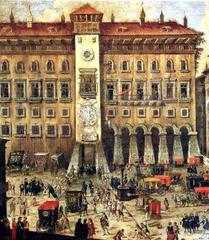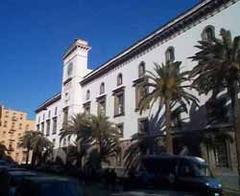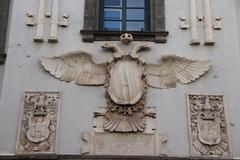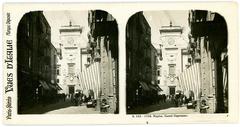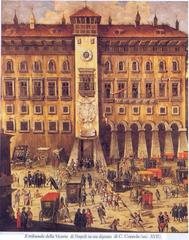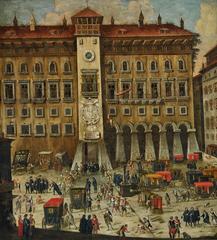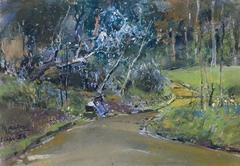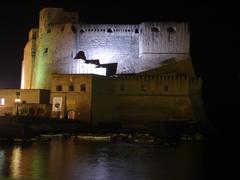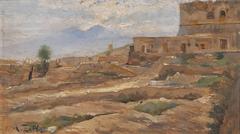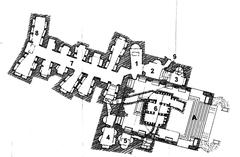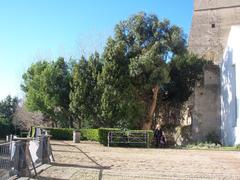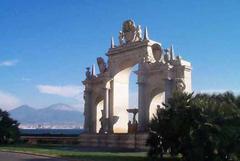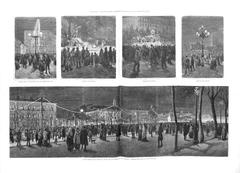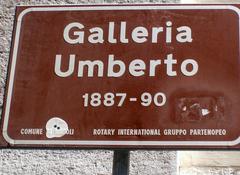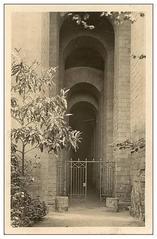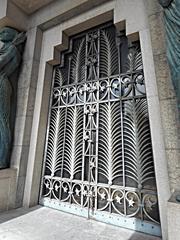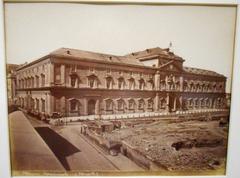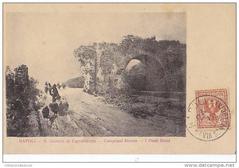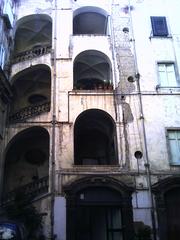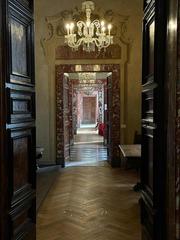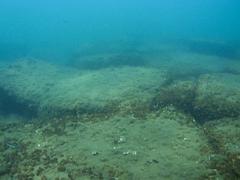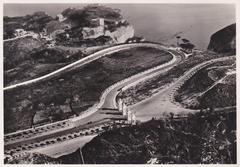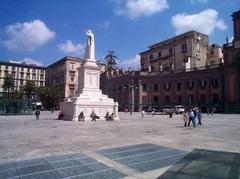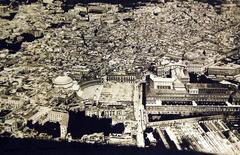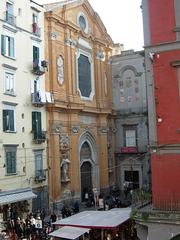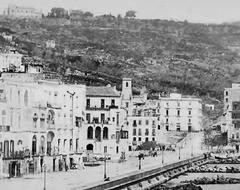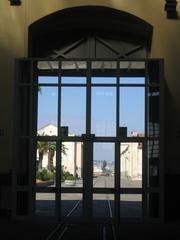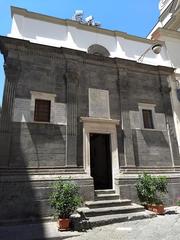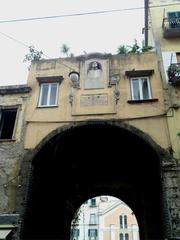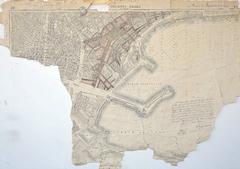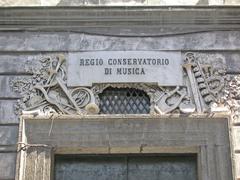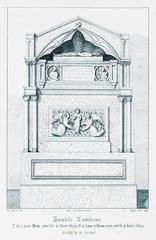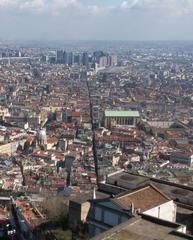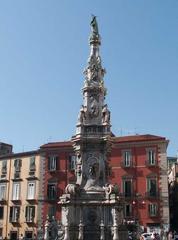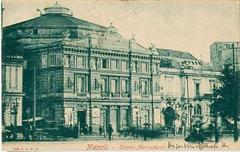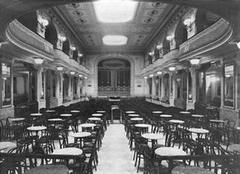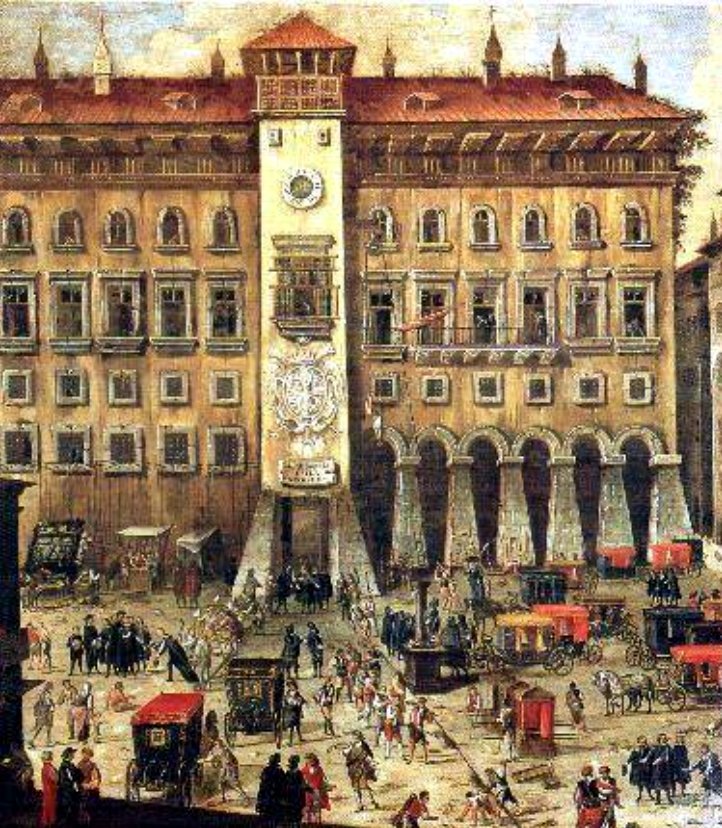
Visiting Archivio Storico e Biblioteca del Banco di Napoli: Hours, Tickets, and Tips
Date: 01/08/2024
Introduction
Located in the historical heart of Naples, the Archivio Storico e Biblioteca del Banco di Napoli is a monumental treasure trove that chronicles the rich economic and social history of Southern Italy. Housed in the historic buildings of Palazzo Ricca and Palazzo Cuomo, this archive is renowned for being the largest archival collection of bank documents in the world, with records dating back to the mid-1500s (Google Arts & Culture). The establishment of the archive was initiated by Ferdinand I of Bourbon in 1819, consolidating the documents of various Neapolitan public banks, which later evolved into the Banco di Napoli (Wikipedia). Today, this archive not only serves as a crucial research hub but also as a cultural landmark, offering visitors a vivid insight into the historical and financial evolution of the region through its extensive collection of documents, multimedia exhibits at the ilCartastorie Museum, and interactive storytelling experiences (Fondazione Banco di Napoli). Whether you’re a history buff, a researcher, or a curious traveler, exploring this archive offers a unique opportunity to delve deep into the narratives that have shaped Southern Italy over the centuries.
Table of Contents
- [Introduction](#introductionintroduction)
- [History of Archivio Storico e Biblioteca del Banco di Napoli](#history-of-archivio-storico-e-biblioteca-del-banco-di-napolihistory-of-archivio-storico-e-biblioteca-del-banco-di-napoli)
- [Establishment and Early Years](#establishment-and-early-yearsestablishment-and-early-years)
- [Transition to Banco di Napoli](#transition-to-banco-di-napolitransition-to-banco-di-napoli)
- [The Role of Palazzo Ricca](#the-role-of-palazzo-riccathe-role-of-palazzo-ricca)
- [Expansion and Modernization](#expansion-and-modernizationexpansion-and-modernization)
- [ilCartastorie Museum](#ilcartastorie-museumilcartastorie-museum)
- [Significance of the Archive](#significance-of-the-archivesignificance-of-the-archive)
- [Preservation and Accessibility](#preservation-and-accessibilitypreservation-and-accessibility)
- [Historical Context and Impact](#historical-context-and-impacthistorical-context-and-impact)
- [Research and Educational Opportunities](#research-and-educational-opportunitiesresearch-and-educational-opportunities)
- [Visitor Information: Tickets, Hours, and Accessibility](#visitor-information-tickets-hours-and-accessibilityvisitor-information-tickets-hours-and-accessibility)
- [Special Events and Guided Tours](#special-events-and-guided-toursspecial-events-and-guided-tours)
- [Nearby Attractions](#nearby-attractionsnearby-attractions)
- [FAQ](#faqfaq)
- [Conclusion](#conclusionconclusion)
History of Archivio Storico e Biblioteca del Banco di Napoli
Establishment and Early Years
The Archivio Storico e Biblioteca del Banco di Napoli owes its establishment to a decree by Ferdinand I of Bourbon on November 29, 1819. This decree assigned the building to the General Archive of the documents of the former Neapolitan public banks, including those of their successor, the Banco delle Due Sicilie (Google Arts & Culture). The Banco delle Due Sicilie, established in 1809, was a consolidation of several public banks, including the Banco dei Poveri, Banco della Pietà, Banco del Popolo, Banco dello Spirito Santo, Banco del Salvatore, Banco di Sant’Eligio, and Banco di San Giacomo. These banks’ documents were transferred to the new archive, creating a comprehensive repository of financial and social history.
Transition to Banco di Napoli
In 1861, following the unification of Italy, the Banco delle Due Sicilie was renamed Banco di Napoli. The institution continued to preserve its documentation at the archive located on Via dei Tribunali. This archive was known as the General Archive until 1950, when it was renamed the Banco di Napoli Historical Archive (Wikipedia).
The Role of Palazzo Ricca
The archive is housed in Palazzo Ricca, located at Via dei Tribunali 213, along the decumano maggiore of Naples. Palazzo Ricca has a rich history, having been the seat of the Monte e Banco dei Poveri since 1616, when it was acquired by Gaspare Ricca. In 1787, the building was expanded by incorporating the adjacent property purchased from the heirs of Don Pietro Cuomo (Wikipedia).
Expansion and Modernization
The archive has grown significantly over the years. Today, it comprises 330 document rooms and approximately 80 kilometers of shelving. This vast collection makes it one of the most important sources for research and study of economic and social history, offering an organic overview of various historical events and stories (Google Arts & Culture).
ilCartastorie Museum
In March 2016, the ilCartastorie Museum was established within the archive. The museum aims to make the hidden stories within the archive’s documents accessible to a broader audience through storytelling. This initiative has transformed the archive into a dynamic cultural hub, attracting both researchers and casual visitors interested in the rich history of Naples and Southern Italy (Google Arts & Culture).
Significance of the Archive
The Banco di Napoli Historical Archive is an irreplaceable part of the heritage of Southern Italy. It contains documents dating back to 1573, providing a comprehensive record of the region’s economic and social history over the past 450 years. The archive’s collection includes payment orders, ledgers, and other financial documents that offer invaluable insights into the historical context of various periods (Weird Italy).
Preservation and Accessibility
One of the main tasks of the Fondazione Banco di Napoli today is to maximize the value of this enormous archived heritage. The foundation has undertaken vigorous efforts to disclose the archive’s treasures and allow wider consultation of its document resources. This includes digitizing documents and making them available online, as well as organizing exhibitions and educational programs to engage the public (Google Arts & Culture).
Historical Context and Impact
The archive’s documents provide a unique window into the economic and social history of Naples and Southern Italy. For example, the records from the Banco dei Poveri offer insights into the social welfare systems of the time, while the documents from the Banco della Pietà reveal the financial practices and charitable activities of the period. These records are not just of local significance but also contribute to the broader understanding of European economic history (Fondazione Banco di Napoli).
Research and Educational Opportunities
The Banco di Napoli Historical Archive is a valuable resource for researchers and historians. Its extensive collection of documents provides primary sources for studies in various fields, including economic history, social history, and the history of banking. The archive also collaborates with academic institutions to support research projects and educational programs, further enhancing its role as a center of knowledge and learning (Google Arts & Culture).
Visitor Information: Tickets, Hours, and Accessibility
Visiting the Archivio Storico e Biblioteca del Banco di Napoli offers a unique opportunity to delve into centuries of history. Here’s what you need to know before you go:
- Opening Hours: The archive is open from Monday to Friday, 9:00 AM to 5:00 PM. It is closed on weekends and public holidays.
- Tickets: Admission is free, but donations are appreciated to support the preservation efforts.
- Accessibility: The building is wheelchair accessible, and there are facilities for visitors with disabilities.
- Guided Tours: Guided tours are available by appointment. It’s recommended to book in advance to ensure availability.
Special Events and Guided Tours
The archive frequently hosts special events, including exhibitions, lectures, and workshops. These events provide deeper insights into specific aspects of the archive’s collection and history. Guided tours are also available, offering a more structured and informative experience.
Nearby Attractions
While visiting the Archivio Storico e Biblioteca del Banco di Napoli, consider exploring nearby historical sites:
- Naples Cathedral (Duomo di Napoli): A stunning example of Gothic architecture just a short walk away.
- San Gregorio Armeno: Famous for its artisan shops selling nativity scenes.
- Naples National Archaeological Museum: One of the most important archaeological museums in the world.
FAQ
What are the visiting hours for Archivio Storico e Biblioteca del Banco di Napoli? The archive is open from Monday to Friday, 9:00 AM to 5:00 PM. It is closed on weekends and public holidays.
How much are the tickets for Archivio Storico e Biblioteca del Banco di Napoli? Admission is free, but donations are appreciated to support the preservation efforts.
Is the archive wheelchair accessible? Yes, the building is wheelchair accessible, and there are facilities for visitors with disabilities.
Conclusion
The Archivio Storico e Biblioteca del Banco di Napoli stands as an irreplaceable repository of Naples’ rich economic and social history. Its extensive collection of documents, spanning over 450 years, offers invaluable insights into the region’s development and interactions with broader Europe (Google Arts & Culture). The archive’s evolution—from its establishment under Ferdinand I of Bourbon to its modern embodiment with the ilCartastorie Museum—reflects ongoing efforts to preserve and make accessible this wealth of historical data. Whether through free admissions, guided tours, or special exhibitions like Caravaggio’s masterpieces, the archive continues to engage a diverse audience, making history accessible and relatable (Fondazione Banco di Napoli). Thus, a visit to the Archivio Storico e Biblioteca del Banco di Napoli is more than just a tour; it’s an educational journey through the annals of Southern Italy’s past, offering a profound understanding of its cultural and economic heritage.
References
- Google Arts & Culture, n.d., The Historical Archive of the Banco di Napoli source url
- Wikipedia, n.d., Archivio Storico del Banco di Napoli source url
- Fondazione Banco di Napoli, n.d., Archivio Storico del Banco di Napoli source url
